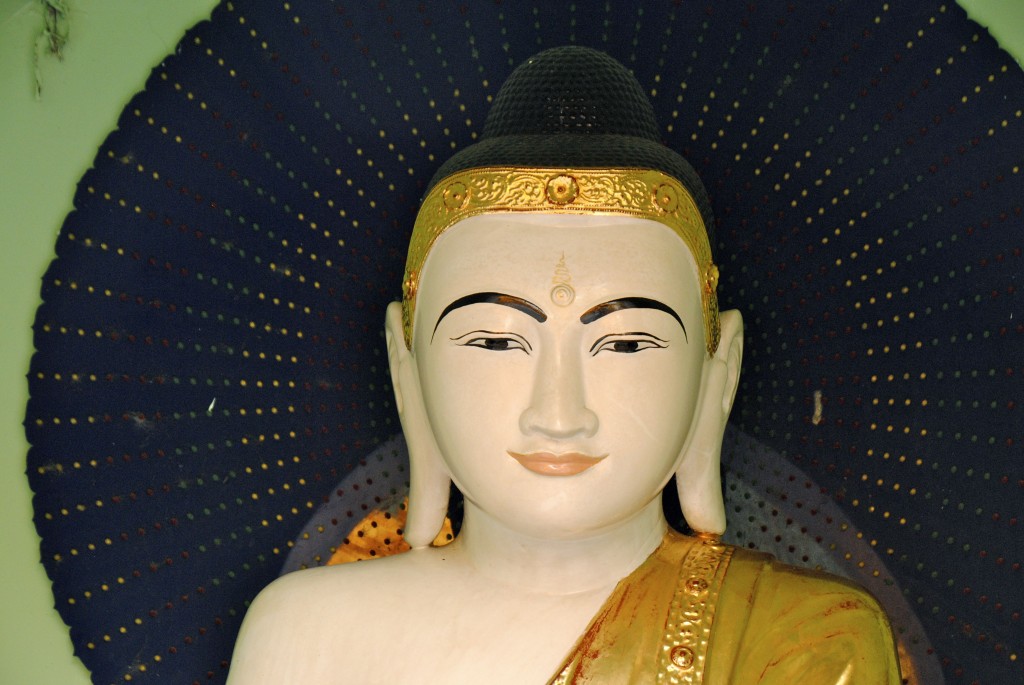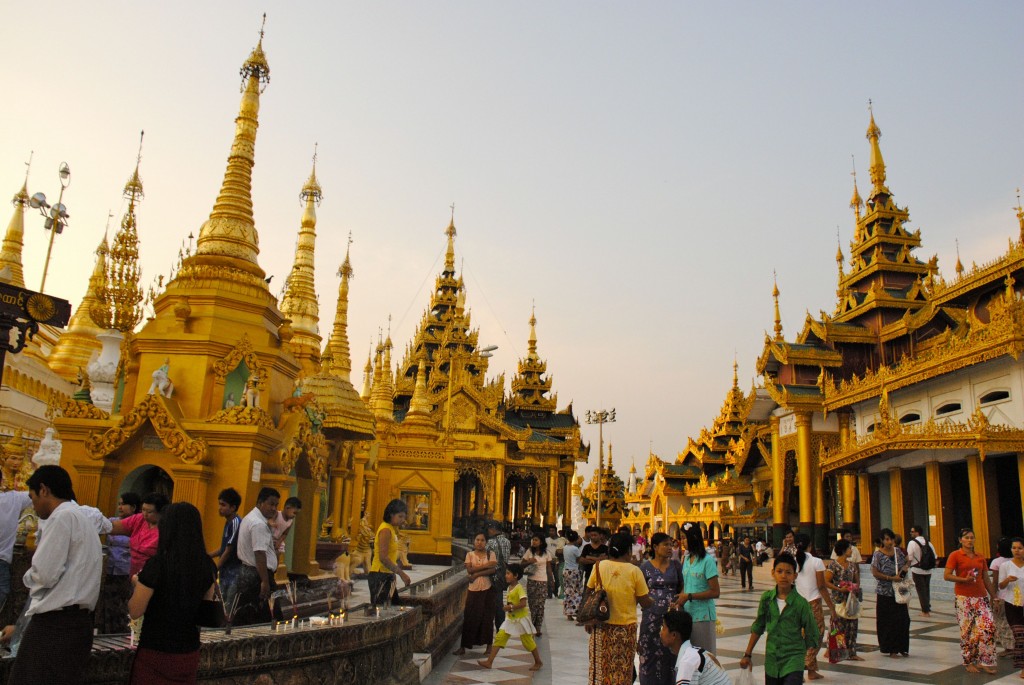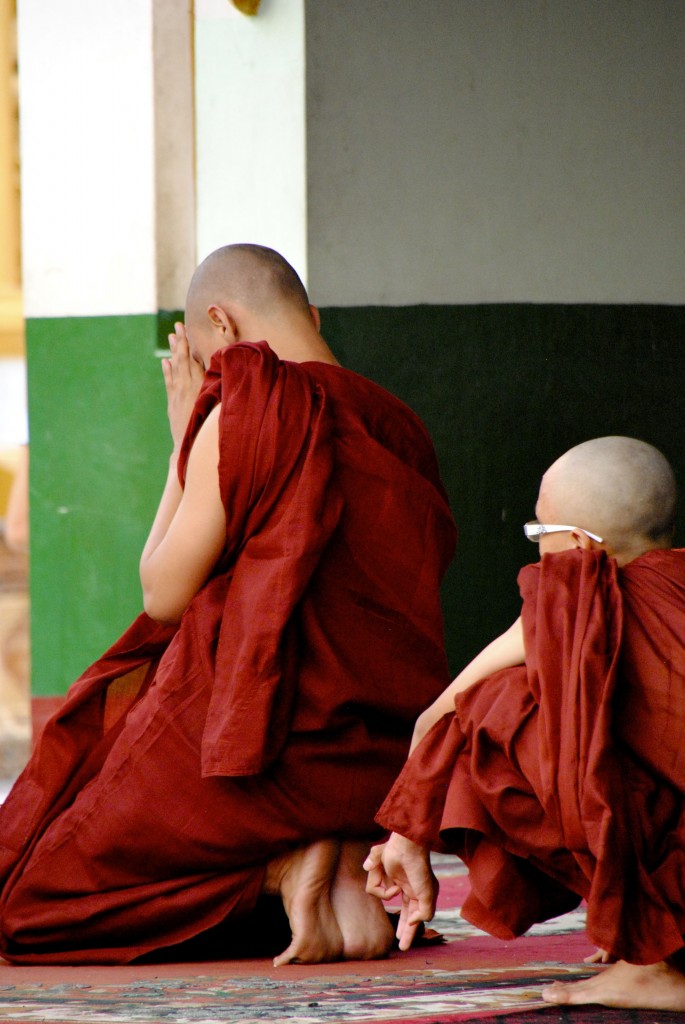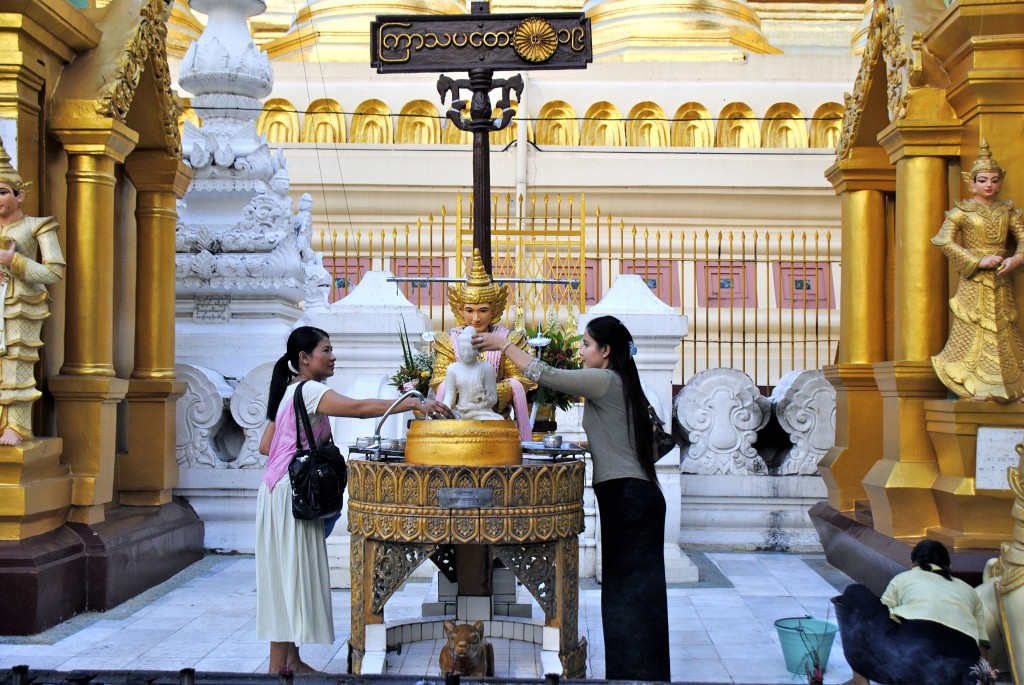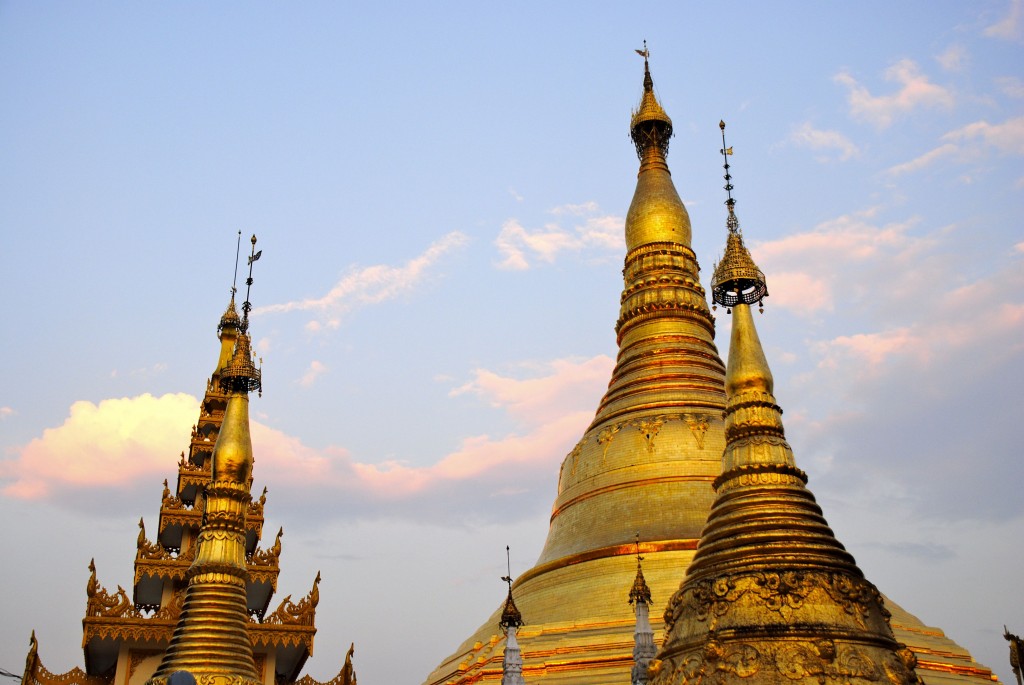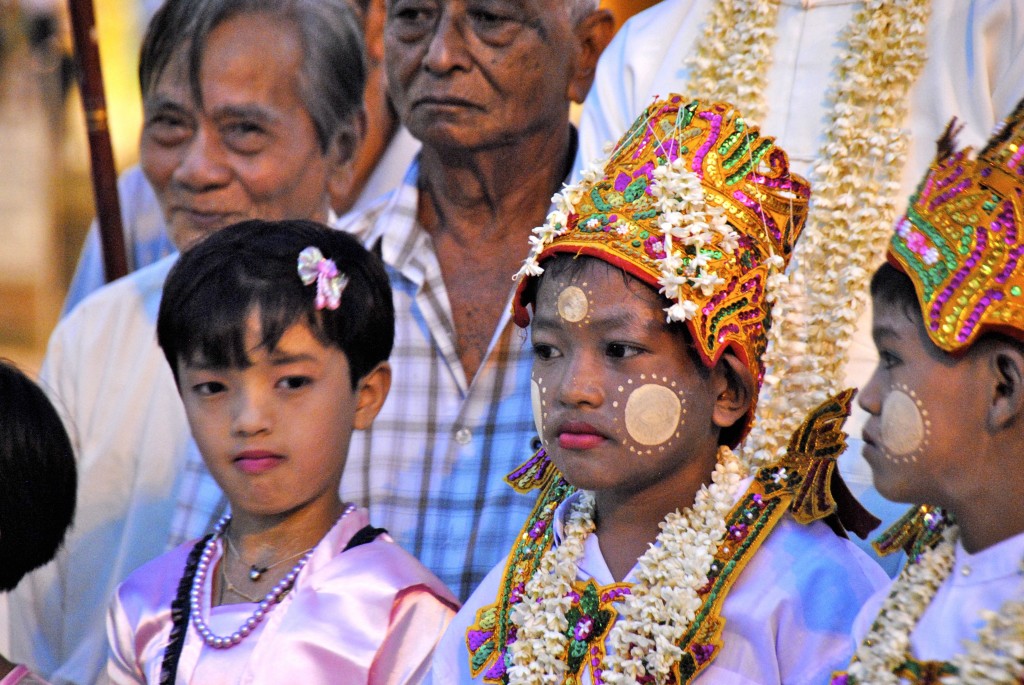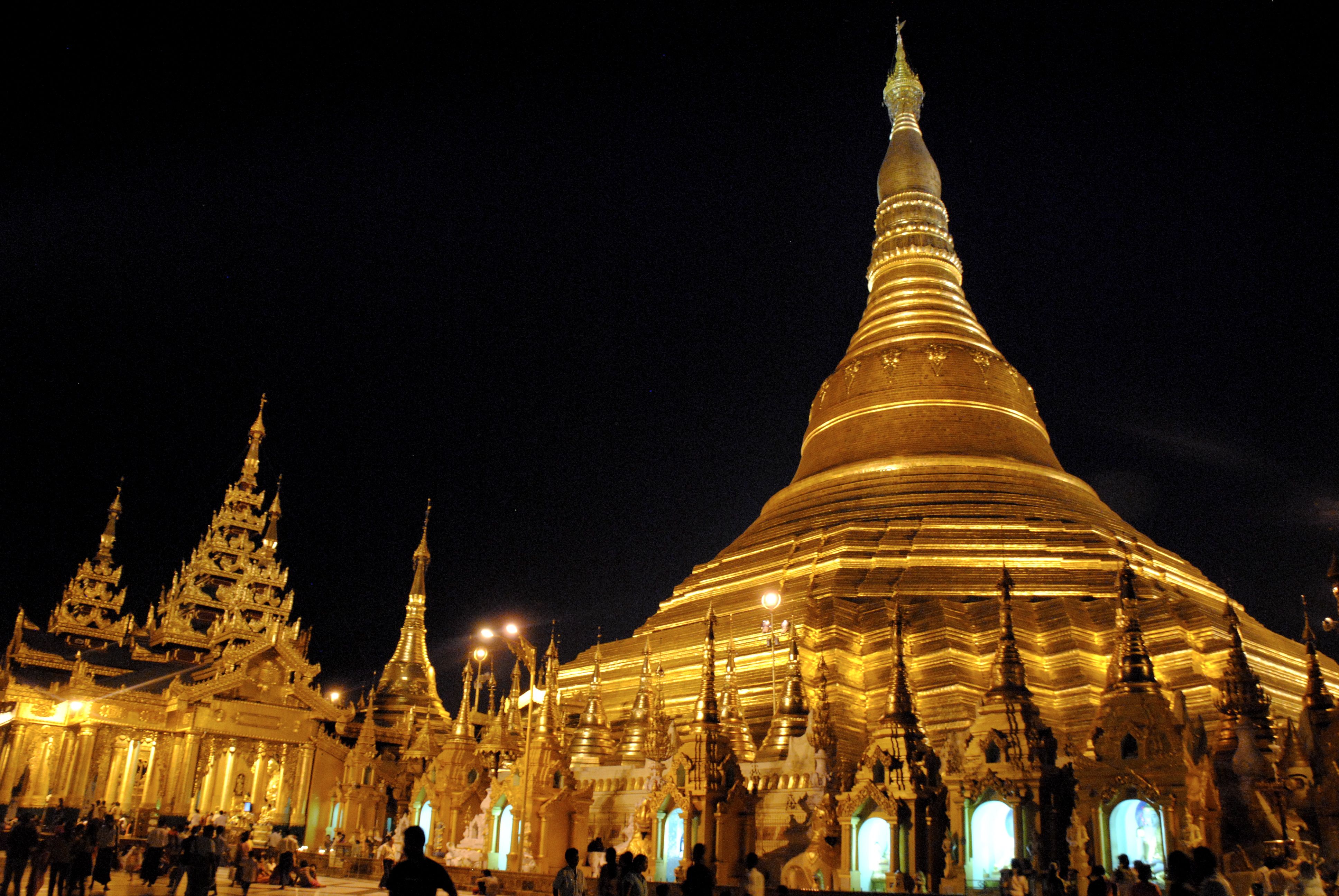
I returned to Yangon from Inle Lake to meet Nanny, Eliza, Alex, and Maggie, some of the other Lao PiA-ers who had just arrived, and who I’d be traveling with for the rest of the week. We had a full day in Yangon before moving on to our next destination, and most of the day was spent on a wild hunt for airline tickets at travel agencies around town. With the New Year Festival approaching, remaining seats were few, and of course nothing was as simple as it seemed like it should be. Luckily, the discomfort of fitting five of us into an old taxi cab with no air conditioning in the 90+ degree Yangon heat was relieved by the hilarious and entertaining exchanges with our cab drivers. In keeping with the extreme friendliness of almost everyone we met in the country, all of our drivers were excited to speak English with five American girls and to attempt to teach us some Burmese as well. Somehow we found ourselves singing along in a cab to “Smack That,” by Akon with a driver who shared stories about his other job as a singer and his love for American rap, especially Akon and T.I. American pop culture just seems to seep to all corners of the world, in sometimes the most random ways (another example from Burma being the dubbed versions of “Baby” by Justin Bieber and “Waka Waka” by Shakira playing at the market).
After finally getting our travel plans settled, we stopped by the central market to peruse and agonize over art purchases for a bit. This is one of the few places in the country where people were a bit more aggressive about trying to beg or sell things to tourists, but in general, even here, people were very polite. Food of all kinds–from vegetables to skinned pig faces to samosas–spilled out onto the streets, and art, jewelry and textile shops lined the interior of the buzzing marketplace.
Just as dusk began to set in, we headed for the Shwedagon Pagoda, at the top of Yangon’s must-see list, and Burma’s most famous symbol. The gold-plated stupa is an important Buddhist site in the country (a country in which there are half a million monks, which is one for every ten people) and a landmark of its capital city.
We enlisted the services of Win, who turned out to be an incredible tour guide, and spent hours patiently leading us around the base of the stupa. The pagoda is not just a stand-alone temple, but a whole complex of shrines, and smaller temples, all with different significance and purpose, surrounding the main stupa. Entrance is free for locals, and so it doesn’t feel like a huge tourist attraction. There were many tourists, but they were far outnumbered by locals–monks, families, Burmese visitors from other parts of the country–praying, walking, and enjoying the splendor of the pagoda at nightfall. As the sun set, the base of the pagoda felt like one of the most spiritual places I’ve ever visited, with the stupa’s golden glow, and the calm and peaceful buzz of so many people with their families, barefoot, going about their rituals in such a beautiful place. All men are supposed to be monks at least twice in their life–usually once when they’re younger as a “novice” and once as an adult–so many monks, and even some pink-robed nuns, were in the evening temple crowd.
Around the stupa were many sub-temples and points of interest, all with specific rituals attached, from giant bells to ring to pulleys that would power fans to fan a massive Buddha image. In one place a large star on the floor is a special place to stop and pray for wishes that you have. Around the circular base are shrines for each day of the week (knowing the day of the week you were born on is essential in Myanmar), which are also associated with animals, and many people come on their day each week to pour water on the statues. This can be done on any day for luck and prosperity, so Win taught us the proper techniques, and we each visited our day’s shrine as we circled the base.
At the top of the Paya, almost too small to be seen by the naked eye (but visible through provided binoculars) is a diamond, encrusted with other precious stones. When the sun is at the perfect height as it goes down, you walk in a line in one part of the base and see a perfect spectrum changing before your eyes.
